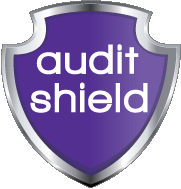
Settle Back Taxes up to Less Than You Owe. Get Your Free Tax Analysis. What is tax shield on interest expense? How do you calculate tax shield? A Tax Shield is an allowable deduction from taxable income that in a reduction of taxes owed.
The value of these shields depends on the effective tax rate for the corporation or individual. No matter which approach is use we can see the business has an operating cash flow of $1200. Which of the following is the equation for estimating operating cash flows using the tax shield approach ? NPV for those cash flows is $40000. Which one of the following is the equation for estimating operating cash flows using the tax shield approach ? Tax shield on Charity- Charitable giving can also lower a taxpayer’s obligations. The tax shield approach means basing business-spending decisions on how they cut your taxes.
Claiming accelerated depreciation on business assets, for example, can give you a larger write-off the first few years after the purchase. TAX SHIELD APPROACH 2. There are hundreds of different tax shields available to individuals and companies, though the tax shields are usually available only under certain circumstances. A priori, therefore, the firm valuation and capital structure implications of the debt tax shield are unclear, so empirical investigation is required.

OCF B = –$33NPV B. Empirical investigation of the debt tax shield has followed three primary lines of inquiry. First, many studies investigate the MM prediction. Given here is a tax shield approach formula for estimating the operating cash flow.
A tax shield is a reduction in taxable income for an organization achieved through claiming allowable deductions such as mortgage interest, medical expenses, charitable donations, amortization, and depreciation. Liu also shows that the MM are wrong, and claims that the slicing approach has finally resolved the issue of pricing tax shields, thereby bringing closure to the topic. A depreciation tax shield is a tax reduction technique under which depreciation expense is subtracted from taxable income. The amount by which depreciation shields the taxpayer from income taxes is the applicable tax rate , multiplied by the amount of depreciation.
Depreciation Tax Shield is the tax saved resulting from the deduction of depreciation expense from the taxable income and can be calculated by multiplying the tax rate with the depreciation expense. Companies using accelerated depreciation method (higher depreciation in initial years) are able to save more taxes due to higher value of tax shield. The general approach for this type of activity requires identifying the amount of depreciation that is allowed for the tax period and multiplying that figure by the current tax rate. Value of the Tax Shield. In most business valuation scenarios, it is assumed that the business will continue forever.
Under this assumption, the value of the tax shield is: (interest bearing debt) x ( tax rate). Using the above examples: Assume Case A brings after- tax income of $per year, forever. WallStreetMojo 5views. The value of a tax shield is calculated as the amount of the taxable expense, multiplied by the tax rate.
Thus, if the tax rate is and the business has $0of interest expense, the tax shield value of the interest expense is $210. As such, APV analysis can be preferred in highly leveraged transactions. Shield GEO manages all aspects of payroll for workers in the Philippines, including taxes, withholding, social security payments and other statutory requirements. Shield GEO becomes the Employer of Record and employs the staff on behalf of the client. Staff are paid monthly with tax and social security deducted at source and paid to local.
Compute tax savings from depreciation (depreciation tax shield ). Solution: Depreciation tax shield = Tax rate × Depreciation deduction = 0. Capital budgeting with income tax : As the after- tax cash inflow, after- tax cost and depreciation tax shield have been discusse We can explain the impact of income tax on capital. The same relationship as earlier described stating that the cost of equity rises with leverage, because the risk to equity rises, still holds. The formula, however, has implications for the difference with the WACC. Their second attempt on capital structure included taxes has identified that as the level of gearing increases by.

Tax Shield Approach : A tax shield is a benefit that is available for the companies in the form of deduction of certain expenditures such as interest expense and noncash expenses like depreciation.
Comments
Post a Comment